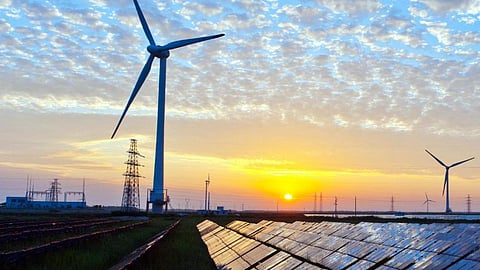
- Topics
- Feature
- Opportunities & Events
- Data
- Hindi Portal
- Topics
- Feature
- Opportunities & Events
- Data
- Hindi Portal

In 2021, at global climate negotiations, the government established a new commitment to reach net-zero greenhouse gas emissions by the year 2070. It also reaffirmed its aim to install 500 GW of non-fossil power capacity by 2030. This is up from 159 GW of non-fossil capacity as of February 2022 (Central Electricity Authority [CEA], 2022).
Renewable energy subsidies in India have fallen by 59% to INR 6,767 crore after peaking at INR 16,312 crore in FY 2017 as deployment slowed during COVID-19 pandemic-induced lockdowns and grid-scale solar PV and wind achieved cost parity, according to a joint independent study released today by the Council on Energy, Environment and Water (CEEW) and the International Institute for Sustainable Development (IISD).
To achieve the 2030 clean energy targets, more subsidy support will be needed to scale up solar manufacturing, green hydrogen, and promising decentralised renewable energy technologies. The report ‘Mapping India’s Energy Policy 2022: Aligning Support and Revenues with a Net-Zero Future’ found that overall India’s subsidies for fossil fuels, such as coal, oil and gas, have dropped notably by 72% to INR 68,226 crore during the seven-year period between 2014 and 2021.
However, subsidies in FY 2021 are still nine times higher than renewable energy subsidies. The country, therefore, needs to further shift support away from fossil fuels and towards clean energy technologies to reach 500 GW of non-fossil power capacity by 2030 and net zero emissions by 2070.
Overall, India provided over INR 540,000 crore to support the energy sector in FY 2021, including nearly INR 218,000 crore in the form of subsidies. Most notably, in May 2022, India reintroduced LPG subsidy of INR 200 per gas cylinder (for up to 12 cylinders) for the beneficiaries of the Pradhan Mantri Ujjwala Yojana (PMUY) scheme.
“The reintroduction of the LPG subsidy is a welcome move. As the fiscal situation improves, rapidly scaling up targeted LPG subsidies is the only solution to ensure that the benefits of the PMUY scheme are sustained in the long run. Further, the Centre and the states must ensure adequate support and financing models for clean energy in the medium- and long-term, in line with India’s stated decarbonisation goals,” said co-author of the study Karthik Ganesan, Fellow and Director of Research Coordination at CEEW.
The study further notes that electric vehicle (EV) subsidies have more than tripled since FY 2017 to INR 849 crore in FY 2021. During the year, India announced a production-linked incentive program to attract investments in domestic manufacturing of EVs and components.
The report also highlights that India’s non-banking financial companies (NBFCs) are now playing a major role in shifting public finance away from fossil fuels, but as of today, no public finance institutions (PFIs) have established clear plans for phasing out finance for fossil fuels.
In fact, annual disbursements by the largest PFIs were 3 times higher for fossil generation than renewable energy in FY 2021, according to the report. While several public sector undertakings (PSUs) have announced new clean energy partnerships and targets, they need to set out clear strategies for adjusting business models to the energy transition and net-zero goals.
“To accelerate the pace of India’s energy transition, public finance institutions need to increase the clean energy sector lending targets, in line with stated policy targets, and develop a medium to long-term roadmap for phasing out public finance for fossil fuels and managing possible stranded assets,” said co-author of the report Swasti Raizada, Policy Advisor at IISD. “They should seek to swiftly end new public finance for coal-based power plants which are at a high risk of becoming stranded assets.”
To support India’s ambitions, this report provides an updated assessment of public resources that support fossil fuels, renewables, and electric vehicles. It quantifies trends in support levels in recent years and identify major areas where budgeting can be better aligned with stated policy objectives. Next, to explore the revenue implications of the energy transition, it identifies the revenues raised from fossil and clean energy.
To ensure that revenue benefits are considered in the context of full costs, it also estimates externalities associated with the various sources of energy that India relies on. This results in two key themes: “support” and “revenue and externalities”.
The full report can be accessed here